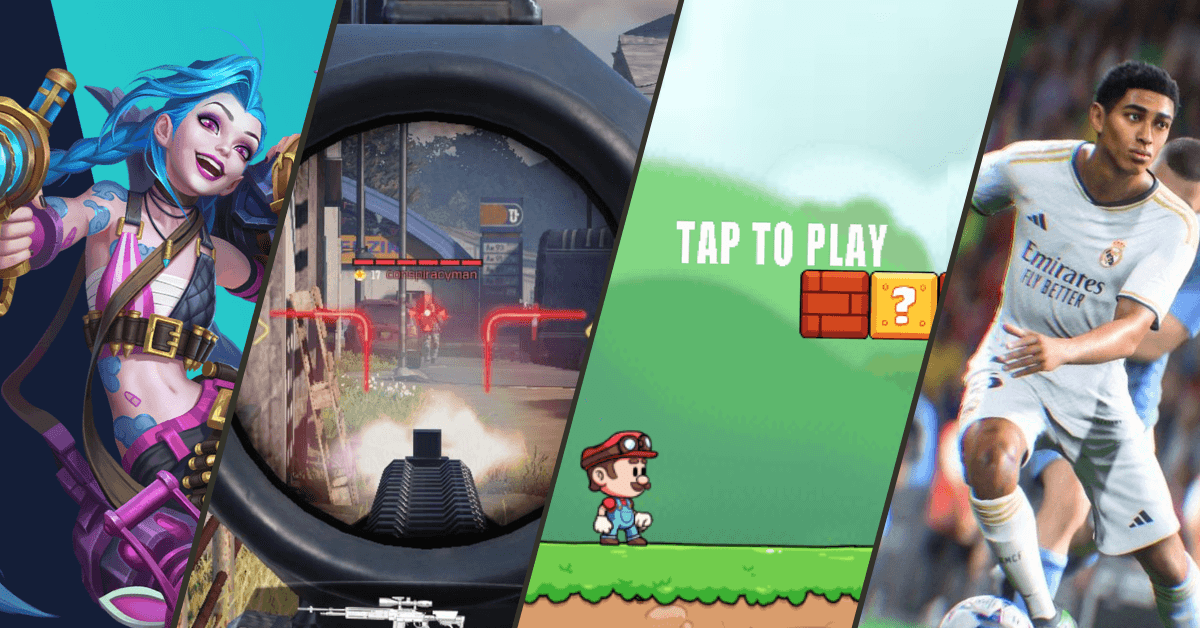If you’re developing a game, there’s one thing you have to get right from the start: game mechanics.
Game mechanics are what make a game feel like a game. They’re the actions you give to the player and the rules that define what happens when those actions are used. If your mechanics are clunky, confusing, or boring, it doesn’t matter how pretty your art is or how epic your story sounds—players won’t stick around.
This guide is here to help you get mechanics right.
We’ll go over what game mechanics are (and what they’re not), how to design them well, how to avoid common mistakes, and how to make them fun and satisfying.
Whether you’re working on your first platformer, a mobile puzzle game, or a full-blown RPG, this stuff applies.
Let’s break it down, step by step.
What Are Game Mechanics (And What They’re Not)?
Game mechanics are the rules and systems that shape how players interact with your game.
Simple as that.
If your player taps to jump, swipes to dash, collects coins, takes damage, or unlocks doors—those are all game mechanics. They’re the building blocks that create the moment-to-moment gameplay.
But here’s the important part: a lot of beginners confuse mechanics with other parts of a game. So let’s clear that up.
Mechanics are not:
Those things are important too, but they’re not mechanics. They don’t define how the player plays—they just influence the experience around it.

Mechanics vs. Gameplay vs. Other Features
This is where a lot of confusion happens, so here’s the simplest way to think about it:
- Mechanics are the actions and rules.
Example: Pressing a button to jump. - Gameplay is the full experience that comes from using those mechanics.
Example: Using jump to avoid enemies, reach platforms, and time your moves. - Features are extras that support the game.
Example: Multiplayer mode, in-app purchases, a crafting system, story cutscenes.
So when someone says “this game has great gameplay,” they’re usually talking about how well the mechanics come together into something fun and engaging.
Next, we’ll look at the difference between core mechanics and the ones that add extra flavor.
Stick with me—it’s where things start getting really useful.

Core vs. Additional Game Mechanics
Not all game mechanics carry the same weight. Some are the backbone of your game—others are more like optional muscles.
Let’s talk about the difference.
Core Mechanics: The Foundation
Your core mechanics are the main thing your player is doing over and over again.
Think of them as the heartbeat of your game. If you removed them, the game would fall apart.
Let’s look at a few examples:
- In Super Mario, the core mechanics are running and jumping.
- In Call of Duty, it’s aiming and shooting.
- In Candy Crush, it’s swapping tiles to make matches.
You build your entire game around these mechanics. They’re the actions the player needs to master, the ones you’ll keep coming back to across every level or encounter.
So when you’re starting out, this is what you need to define first:
What is the player doing 80% of the time, and how can I make that feel good?
If that core loop isn’t fun, no extra feature or system is going to save your game.
Additional Mechanics: The Flavor
Once your core is solid, you can start layering on additional mechanics—these are the things that add depth, strategy, or variety.
They’re not essential to the basic gameplay, but they make it more interesting over time.
Examples of additional mechanics:
- Wall climbing in a platformer
- Crafting in an RPG
- Reloading or weapon swapping in a shooter
- Power-ups, combos, or score multipliers in an arcade game
- Side quests or mini-games
These mechanics help keep players engaged longer. They reward mastery, give new ways to solve problems, or change how the player approaches a challenge.
But here’s the key: they should always support your core.
If they distract from it—or worse, conflict with it—they can actually make your game worse.
How to Think About It
A good way to separate the two:
- Core mechanics = must-have
- Additional mechanics = nice-to-have (as long as they add value)
When you’re designing your game, lock in your core mechanics first. Test them. Polish them. Make sure they’re fun on their own. Once you’re happy with them, you can start thinking about what extras make sense to build on top.
Next up, let’s dig into a big list of mechanics you can use—sorted by genre, with plenty of examples to spark ideas.
Types of Game Mechanics (Extensive List by Genre)

Action / Platformer Game Mechanics
Let’s start with game mechanics most commonly found in action games.
Jumping
This is the most basic movement mechanic in platformers. It lets players move vertically, avoid enemies, or get over gaps. It’s all about timing and spacing.
Double Jumping
Allows players to jump again while already in the air. Adds more control and mobility, especially useful for reaching hidden areas or correcting mid-air mistakes.
Wall-Jumping
Lets players kick off walls to gain height or cross gaps. Often used in level design to create vertical challenges or locked-off areas that require skill to access.
Dashing
A quick burst of speed, either on the ground or in the air. It can help with dodging, reaching distant platforms, or chaining together movement for fast-paced gameplay.
Rolling
A low-to-the-ground movement, often used to avoid damage or squeeze through tight spaces. Rolling usually has invincibility frames, making it a great tool for skilled dodging.
Crouching
Lets the player duck under obstacles or prepare for specific actions (like charging a jump or aiming low). It’s simple but adds flexibility to movement.
Melee Attacks
Close-range combat—usually punching, kicking, or using a weapon like a sword. Timing and spacing are key, and it often pairs well with combo systems or hit feedback.

Ranged Attacks
Shooting or throwing from a distance. Adds a different layer of strategy—players can stay safe but need to aim and often manage limited ammo or cooldowns.
Parrying / Blocking
Defensive mechanics that let players deflect or absorb attacks. Parrying is riskier but usually stuns enemies or opens them up for a counter. Blocking is safer but might use up a stamina bar or slow you down.
Grappling Hooks
A tool that lets players swing across gaps, pull themselves to surfaces, or yank objects toward them. Great for fluid, momentum-based movement and verticality.
Rope Swings
Similar to grappling but more passive—players grab onto a rope or vine and swing to build momentum. Timing your release adds a layer of skill.
Environmental Hazards (Lava, Spikes, etc.)
These punish poor timing or sloppy movement. They add tension and make the player pay attention to their surroundings.
Timed Obstacles
Platforms that move, disappear, or activate on a timer. These force players to keep moving and think fast—perfect for building tension and pacing.
Health Pickups
Collectible items that restore your health. They act as rewards, checkpoints, or emergency lifelines during tough sections.
Checkpoints
Save progress so players don’t have to start over after dying. They’re all about balancing frustration and challenge—too few feels punishing, too many makes things too easy.
RPG Game Mechanics
RPG mechanics often focus on progression, customization, and choice—so there’s a lot to explore.
Leveling Systems
Players gain experience points (XP) and level up over time. Each level usually makes the character stronger—more health, better skills, etc. It gives a sense of growth and rewards long-term play.

Skill Trees
These let players unlock abilities based on their choices. It’s all about customization—do you want to build a stealthy rogue or a tanky warrior?
Good skill trees give players meaningful options, not just stat boosts.
Inventory Management
Players collect gear, items, and loot. Managing what to keep, sell, or equip becomes a core part of gameplay. This adds strategy and rewards exploration.
Turn-Based Combat
Each character acts in a specific order—like a game of chess with hit points. It’s more about planning and strategy than quick reflexes.
Think Pokémon or Final Fantasy.
Real-Time Combat
Combat happens live, without pausing. Players have to move, aim, and attack on the fly. It’s faster and more reactive than turn-based combat.
Party Systems
Players control or manage a group of characters, not just one. Each party member usually has a unique role (healer, tank, damage dealer), and team synergy becomes a big part of strategy.
Formations
Positioning your party members can give bonuses or change how they’re targeted. For example, melee fighters up front, ranged attackers in back. It adds a tactical layer to battles.
Dialogue Choices
Players pick what their character says, often affecting story outcomes or relationships. Great for immersion and giving players a sense of control over the narrative.
Branching Paths
Different choices lead to different storylines, endings, or character arcs. This gives replay value and makes decisions feel meaningful.
Crafting and Forging
Players can combine materials to create items, weapons, or gear. It’s a satisfying mechanic when tied to exploration or progression systems.
Equipment Modifiers
Items might have special bonuses—fire damage, increased speed, stat boosts, etc. This encourages experimenting with builds and adapting to different enemies or situations.
Status Effects
Poison, sleep, paralysis, buffs, debuffs—these can make battles more dynamic. Players have to think beyond just damage and consider timing and resistances.
Factions and Reputation
Your actions affect how groups in the world see you. Helping one faction might make another hostile. This adds consequence and depth to your decisions.
Puzzle Game Mechanics
Puzzle game mechanics focus on logic, pattern recognition, and clever problem-solving. They’re usually designed to challenge the player’s brain rather than reflexes.

Tile-Matching
You match tiles based on color, shape, or number—usually to clear them from the board. Think Match-3 games like Candy Crush. It’s all about spotting patterns quickly.
Sliding Puzzles
You move tiles or objects within a grid to form a picture or reach a goal. These puzzles test spatial awareness and planning ahead.
Logic Gates and Switches
These involve on/off states or circuit-based logic (like AND, OR, NOT gates).
Often used in games that require powering devices, unlocking doors, or triggering events in a specific order.
Rotating or Moving Objects
Players rotate shapes, mirrors, or pipes to redirect beams, align symbols, or fit pieces together. These puzzles test visual thinking and experimentation.
Physics-Based Mechanics
Here, objects follow the laws of gravity, momentum, and force. Think cutting ropes, stacking crates, or rolling balls.
The player must figure out how to manipulate the environment to solve problems.
Grid-Based Movement
The player or puzzle pieces move one tile at a time, usually in a set direction. Great for creating tight, rules-based challenges where every move counts.
Pattern Recognition
The puzzle is about spotting repeated shapes, sequences, or symbols. It’s satisfying when the player “cracks the code” using observation alone.
Sequence Memory
The player repeats or recalls a pattern shown earlier (e.g., Simon Says or memory cards). These test short-term memory and focus.
Combination Locks
The player has to input the correct code, often found through clues in the environment. It’s a simple but effective mechanic that adds a sense of discovery.

Hidden Object Finding
Players scan an image or area to find specific items. This can be a standalone mechanic or part of a larger puzzle—like finding keys to unlock something else.
Time-Based Challenges
You solve the puzzle within a time limit. This adds pressure and often makes the player rely on intuition rather than slow, methodical thinking.
Chain Reactions
One move triggers a series of events—like a Rube Goldberg machine. These puzzles are satisfying when everything clicks just right.
Simulation / Strategy Game Mechanics
Let’s break down Simulation and Strategy game mechanics. These games are all about planning, decision-making, and managing systems—whether you’re building a city, commanding an army, or running a farm.

Resource Generation
You collect materials like gold, wood, food, or energy—either passively over time or by assigning tasks. These resources fuel everything else you do in the game.
Resource Allocation
This is all about deciding how and where to spend your resources. Do you build more housing or upgrade your defenses? It’s the core of most strategy loops.
Tech Trees
You unlock upgrades, units, or buildings by researching them. Tech trees give players long-term goals and let them pick a path that fits their playstyle.
Base Building
Players place structures on a map to create functional layouts—like power plants, factories, or defenses. Good layout choices often boost efficiency or unlock new possibilities.
Scheduling / Time Management
Players assign tasks or manage time-sensitive goals. Think of games like Overcooked or Two Point Hospital, where the challenge is juggling multiple jobs at once.
Worker Assignment
You control a group of units and assign them to specific tasks—mining, building, defending. Managing your workforce efficiently is a big part of success.
Economy Systems
There’s a full in-game economy—earn, spend, invest, and profit. Players need to balance income vs. expenses, especially in tycoon-style games.
Supply Chains
Players move resources from one place to another to keep production going. Setting up efficient chains—like farms to markets to stores—is both satisfying and strategic.
Fog of War
Parts of the map are hidden until you explore them. This adds tension and forces players to scout and make choices without full information.
Turn-Based Planning
In strategy games like XCOM or Civ, players take turns making decisions. This makes each move more thoughtful and calculated.
Real-Time Strategy (RTS)
Everything happens live, and the player must manage units, resources, and decisions at high speed. It’s all about multitasking and quick adaptation.
Unit Control
Players manage individual or groups of units, giving them movement and action commands. The level of control can range from simple (click-to-move) to complex (formations, stances, abilities).
Terrain Effects
Different terrain types (like forests, mountains, water) affect gameplay—slowing movement, offering cover, or blocking access. Smart players use this to their advantage.
Random Events
Unexpected challenges or bonuses—like a disease outbreak, a market crash, or a treasure find. These keep players on their toes and add replay value.

Shooter Game Mechanics
Time to break down shooter game mechanics. These games focus on precision, reflexes, and tactical decision-making—so mechanics are often about aiming, movement, and combat feedback.
Aiming Assist
Helps players land shots by slightly snapping the crosshair toward targets. Common in mobile and console games to balance for less precise input.
Recoil
Simulates weapon kickback after firing. Makes automatic weapons harder to control and adds a skill element to maintaining accuracy.
Bullet Spread
Shots aren’t perfectly accurate—they deviate slightly. The faster or longer you shoot, the worse your spread can get. Encourages controlled bursts over spray-and-pray.
Hit Detection
Determines whether a shot actually lands. Precise hitboxes for heads, limbs, or weak spots add depth and reward skilled aiming.
Cover Systems
Let players hide behind objects and peek out to shoot. Adds a tactical layer—good positioning can make the difference between winning and losing.
Reloading
Forces downtime between shooting. Managing reloads under pressure adds tension and realism, especially in close fights.
Weapon Swapping
Switching between guns adds flexibility. Good players know when to switch instead of reloading, or when to pick the right tool for the job.
Health Regeneration
Instead of finding medkits, players heal automatically over time if they avoid damage. It keeps the pace fast and rewards retreating strategically.
Medkits / Healing Items
The classic system: collect or buy healing supplies and choose when to use them. It adds resource management and planning to your survival.
Kill Streak Rewards
Players earn temporary power-ups (like airstrikes or UAVs) for consecutive kills. It rewards aggressive play and creates big momentum swings.
Combo / Multi-Kill Bonuses
Killing multiple enemies quickly earns score multipliers or buffs. This pushes players to be fast, aggressive, and efficient.
Zone Control
Players fight over key areas on the map. Holding a zone gives points, buffs, or progress toward victory. It shifts focus from just getting kills to controlling space.
Objective Mechanics
Escort the payload, plant the bomb, capture the flag—objectives shape team behavior and create different types of tension beyond just shooting.
Movement Abilities
Sliding, wall-running, mantling, or climbing. These let players move in more fluid or strategic ways and often define the game’s feel and pacing.
Grenades and Throwables
Flashbangs, smoke, frag grenades—these tools add depth by controlling space, blinding enemies, or flushing them out of cover.

Idle / Incremental
let’s dig into idle game mechanics! These games are all about steady progression, automation, and the satisfaction of watching numbers go up. The mechanics are simple at first but can become surprisingly deep over time.
Passive Income
The player earns currency or resources automatically, even when doing nothing. It’s the core of idle games—you log in, collect, upgrade, and watch your gains grow over time.
Prestige / Rebirth Systems
After progressing far enough, the player can reset the game in exchange for powerful bonuses. It restarts everything but makes future progress faster. This loop keeps players coming back again and again.
Multipliers and Boosts
Upgrades that increase your output by 2x, 10x, or more. These are often the most satisfying part of the game—stacking multipliers to speed up everything.
Automation
Players can unlock systems that perform actions for them (like auto-collecting or auto-upgrading). This frees them up to focus on strategy rather than clicking.
Offline Progress
Even when the game isn’t open, it keeps running in the background. When the player returns, they get a summary of everything earned while away. This adds a feeling of constant progress with minimal effort.
Upgrade Trees
Players unlock new buildings, characters, or systems as they go. Each upgrade makes the numbers go higher or unlocks entirely new mechanics to explore.
Time-Based Events
Short-term events or bonuses that run on timers. These give players something extra to engage with and often offer special rewards to keep the game feeling fresh.
Caps and Soft Resets
To keep progression balanced, some systems cap earnings or force resets after certain milestones. This prevents the game from getting too bloated or boring.
Layered Systems
Great idle games eventually introduce multiple systems—like managing factories, hiring managers, investing in stocks—all feeding into each other. These layers make the game feel deeper over time.
Achievements and Milestones
These reward players for hitting goals and add mini-challenges to guide their progression. They also give a sense of purpose when the main loop starts to feel repetitive.
Casual Game Mechanics
Casual games are all about quick sessions, simple controls, and satisfying rewards. The mechanics are usually easy to pick up but designed to keep you coming back.
Tap and Swipe Controls
The foundation of mobile gameplay. Tapping, swiping, dragging, or holding the screen replaces traditional buttons and joysticks. The key is responsiveness—controls need to feel smooth and intuitive.
Energy Systems
You can only play a certain number of times before your energy runs out. This limits session length and encourages players to come back later. Often tied to monetization (like paying to refill energy).

Daily Rewards
Players get a prize just for logging in each day. These create a habit loop and reward long-term play. Many games increase the reward the more consecutive days you log in.
Spin-the-Wheel Bonuses
A simple randomized reward mechanic. It adds excitement and taps into the same psychology as slot machines—players keep hoping for that “big hit.”
Progression Meters
You fill a bar by completing actions, collecting items, or finishing levels. Watching that meter fill up triggers a nice reward feeling and gives a clear sense of advancement.
Stars and Score Ratings
Levels are rated with stars (usually 1 to 3) based on performance. This pushes players to replay levels and aim for perfection.
Time-Gated Unlocks
You unlock new content (like characters or levels) after a timer runs out. It slows down progress intentionally and encourages frequent check-ins.

Tutorial Pop-Ups
Simple, guided prompts that explain new mechanics as they appear. Casual games rely heavily on this so players can jump in without needing a manual.
Haptic Feedback
Small vibrations or taps when you complete an action. Makes simple mechanics feel more satisfying and tactile.
Visual and Audio Rewards
Sparkles, sounds, screen shakes—these effects “juice up” the mechanic. Even something as small as collecting a coin feels great with the right feedback.
Simple Progression Loops
Collect → Upgrade → Unlock. Most casual games boil down to this loop. The trick is to keep the pacing tight so that players always feel like they’re close to the next reward.
How to Create Good Game Mechanics
Now that we’ve covered the most common types of game mechanics. Here are some tips on how to create good ones for your game.
Start with Your Core Loop
Before you build out levels or add features, figure out your core loop.
What is the main thing your player is doing? Are they solving puzzles, managing a city, shooting enemies, or jumping between platforms? This loop is the heart of your game.
Once you’ve defined it, ask yourself: why would someone want to do this over and over again? What’s the payoff?
A good core loop feels good from the start and gets better the more you play. If it’s not fun in the first five minutes, no amount of content will fix it.
Make Every Input Matter
Every button press, swipe, or tap should have weight. A jump should feel sharp and responsive. A shot should sound loud, shake the screen a little, and hit with impact. A menu tap should give instant feedback.
If a mechanic feels hollow or slow, players will notice—and they’ll stop engaging with it.
Your goal is to make even simple actions satisfying.
When something feels great to repeat, players will stick around longer than you expect.
Balance Challenge and Reward
The best games keep players in a rhythm of effort and payoff. You can do this by mixing in small, frequent rewards with the occasional big one.
Think about how Clash Royale gives you free chests all the time, but you have to work harder to unlock the really good ones.
Use a difficulty curve that starts easy and ramps up slowly. Players need time to learn before you raise the stakes. Once they’ve mastered the basics, reward them with optional challenges that are harder but come with a higher payout.
And when you can, build in risk-vs-reward moments—those tense decisions where the greedy option could lead to either a huge win or total failure. That’s where some of the most memorable gameplay happens.
Playtest Early and Often
You’ll learn more from one person playing your game than you will from hours of theory. Start testing early—even if your art is placeholder and your systems are barebones. What matters most is how it feels to play.
Ask yourself: is this mechanic fun to do a hundred times?
If not, it’s either not satisfying enough, or it overstays its welcome. Watch players closely. Don’t explain anything. Just see what they do—and what they don’t do. Their confusion is your design clue.
Add Constraints for Creativity
Limiting what players can do often leads to better gameplay. If you give them infinite health, ammo, or time, the game gets stale. But if they have to make do with just three moves, a short timer, or a small inventory, they’ll start getting creative.
Constraints push players to plan, adapt, and problem-solve. They also help keep your systems clean and focused. Less freedom can actually lead to more fun.
Add Some Juice to Make It Feel Better
Juice is the extra polish that makes your game pop. It’s the sound effect that plays when you collect a coin, the slow-mo when you land a perfect shot, the particles that burst when you destroy something.
None of it changes how the game works—but it totally changes how it feels.
These little touches are cheap to add, but they do a ton of work. They turn okay mechanics into satisfying ones. Don’t wait until the end of development to think about them—juice should be baked in from the start.
Introduce Mechanics Gradually
Don’t overwhelm players with every system right away. Introduce one mechanic at a time, and let players get comfortable with it. Use level design or natural cues instead of walls of tutorial text. A locked door and a nearby key will teach them more than a paragraph ever could.
As the game progresses, bring back older mechanics in new ways. Use them together, twist them slightly, or combine them with new systems. This keeps things fresh while reinforcing what players already know.
Be Willing to Kill Your Darlings
Not every mechanic you design will work—and that’s okay.
Sometimes the mechanic you’re most excited about just doesn’t fit.
The best designers know when to let go, simplify, or combine ideas. Mechanics should always serve the game, not the other way around. Don’t be afraid to make big changes if something isn’t clicking.
Common Mistakes to Avoid
Here’s what not to do.

Designing Around Trends Instead of Your Game
It’s tempting to chase whatever’s hot—battle royales, idle games, roguelikes—but if you’re just copying what’s trending without understanding why it works, your game won’t feel original or fun.
Start by building mechanics that support your idea, not someone else’s. Trends fade, but good design sticks.
Adding Too Many Systems That Don’t Connect
One of the easiest ways to clutter a game is by adding features that don’t support your core loop. Crafting, upgrading, quest logs, side modes—they can all be great, but if they don’t tie into what the player is actually doing most of the time, they’ll just feel like distractions.
Every mechanic should reinforce the gameplay, not compete with it.
Not Testing Mechanics in Isolation First
Don’t wait until your whole game is built to find out if a mechanic is fun. Prototype it on its own. If your core action—like jumping, shooting, or collecting—doesn’t feel good in a simple test scene, it won’t feel good later either. Make it fun without any fancy art or story first. Then build around that.
Mistaking Complexity for Depth
A lot of new devs assume that more mechanics equals a deeper game. In reality, too much complexity just overwhelms players and hides the fun.
Depth comes from using simple mechanics in interesting combinations—not from stacking a bunch of systems on top of each other. Keep things clean, then layer in depth gradually.
Ignoring Player Feedback
You’re not building the game for yourself—you’re building it for real people to play. That means feedback is gold, especially when it points out confusion, boredom, or frustration. Don’t get defensive. Look at how players feel, not just what they say.
If they’re not enjoying something, there’s usually a good reason.
Overexplaining or Underexplaining
Some devs try to teach everything up front with long tutorial screens, while others don’t explain anything and hope players figure it out.
Both are mistakes.
Good teaching is baked into gameplay. Use clear visual cues, context, and smart level design to guide players without overwhelming them.
Forgetting About the First 30 Seconds
First impressions matter.
If your game takes too long to get interesting—or worse, starts with confusing menus or a wall of text—people will bounce before they even see what’s cool.
Make sure your first 30 seconds give players something fun to do. Hook them early, then build from there.
Conclusion
Game mechanics are the foundation of how your game feels, plays, and sticks with people. If your mechanics are strong, even a simple game can be fun and addictive. If they’re weak, even the flashiest visuals won’t save it.
Start small.
Focus on one mechanic that feels good and build from there. Don’t rush to add features—make sure each piece fits and supports the core loop. Test early, simplify when things get messy, and always pay attention to how your game feels in the hands of someone else.
And most importantly, keep going. You’re going to make mistakes. That’s part of it. But every broken system, every confusing control, every moment of “this isn’t working” is a step toward something better. That’s how great games are made—one mechanic at a time.
You’ve got everything you need to start building something great. Now go make it fun.







Comments